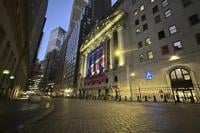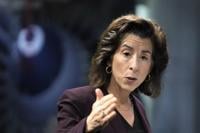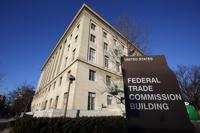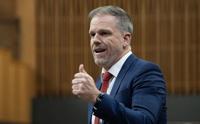NEW YORK (AP) — U.S. stocks drifted to a mixed close after erasing most of their losses from earlier in the day. The S&P 500 slipped a bit less than 0.1% Tuesday, marking its first back-to-back loss in a month and a half. The Dow Jones Industrial Average ended essentially flat. Like the S&P 500, it’s been on a long, record-breaking rally and set its latest all-time high on Friday. The Nasdaq composite rose 0.2%, lifted by gains in several Big Tech stocks including Microsoft. GE Aerospace tumbled after reporting weaker-than-expected revenue. That helped offset General Motors’ best day since 2020 after it delivered stronger profit than expected.
THIS IS A BREAKING NEWS UPDATE. AP’s earlier story follows below.
NEW YORK (AP) — U.S. stocks are drifting in mixed trading Tuesday after erasing losses from earlier in the day.
The S&P 500 was 0.1% lower in late trading and potentially on track for its first back-to-back loss in a month and a half. It also after coming off a sixth straight winning week, its longest such streak of the year.
The Dow Jones Industrial Average was up 3 points, or less than 0.1%, after coming back from a loss of 200 points earlier in the day. Like the S&P 500, it's been on a long, record-breaking rally and set its set on Friday. The Nasdaq composite was 0.1% higher, as of 3 p.m. Eastern time
General Motors jumped 10.1% and was on track for its best day since 2020 after delivering . It benefited from stronger sales to individual U.S. customers, even as sales slowed to large fleet buyers.
Philip Morris International rallied 9.2% after likewise topping forecasts for both profit and revenue and was another one of the strongest forces pushing upward on the S&P 500. CEO Jacek Olczak said the company is seeing momentum across regions and business lines, including growth for both its smoke-free business and for its combustible cigarettes.
Norfolk Southern rose 5.7% after the railroad .
Keeping indexes in check was GE Aerospace, which tumbled 9% and was the heaviest weight on the S&P 500. The company, which after splitting off from the former conglomerate General Electric, reported stronger profit for the latest quarter than analysts expected, but its revenue fell short of forecasts.
Verizon Communications sank 4.7% after likewise reporting weaker revenue for the latest quarter than expected, even though its profit edged past forecasts.
Genuine Parts, which sells automotive and industrial replacement parts, dropped 19.5% for the largest loss in the S&P 500 after its profit for the latest quarter fell well short of expectations. CEO Will Stengel said much of the shortfall was due to continued weakness in Europe and its industrial business.
Sherwin-Williams sank 4.7% after both its profit and revenue came in weaker than analysts expected. CEO Heidi Petz cited a “tough macroeconomic environment” and “continued choppiness in the demand environment” for its paints and coatings. Demand from do-it-yourself customers in North America remains weak given the higher debt levels that they’re carrying and still-lingering inflation.
Stocks have slowed their record-breaking momentum this week under increasing pressure from rising Treasury yields in the bond market.
The yield on the 10-year Treasury was holding steady at 4.20%, where it was late Monday. That's well above the 4.08% level it was at just on Friday. Higher yields for Treasurys can make investors less willing to pay high prices for stocks, which critics say already look too expensive.
Treasury yields have been climbing following a raft of reports showing the remains . That’s good news for Wall Street, because it bolsters hopes that the economy can from the without the painful that many had worried was inevitable.
“What appears to be unfolding before our eyes is a soft-landing scenario only the most optimistic dream of,” according to Gregory Daco, EY chief economist.
But it also is forcing traders on Wall Street to ratchet back expectations for how much the Federal Reserve will . The central bank has made the drastic shift to lowering interest rates in hopes of keeping the economy strong, but a more resilient-than-expected economy wouldn’t need as much help.
Traders are now largely expecting the Fed to cut its main interest rate by half a percentage point more through the end of the year, according to data from CME Group. A month ago, some of those same traders were betting on the federal funds rate ending the year as much as half a percentage point lower than that.
In stock markets abroad, European indexes were modestly lower despite German software giant SAP nudging past profit expectations. In Asia, Japan's Nikkei 225 dropped 1.4%, and South Korea's Kospi fell 1.3%, but indexes were more resilient in China.
___
AP Business Writers Yuri Kageyama and Matt Ott contributed.








































